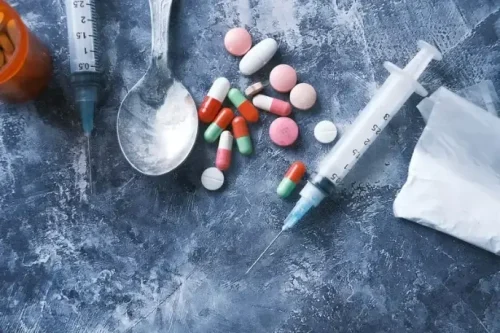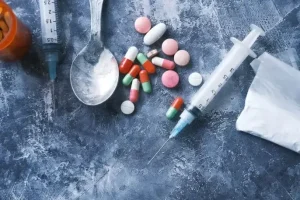
If you’re worried about your substance use and think you might be at risk for a substance use disorder, the best thing to do is to seek help and information, says O’Neill. “There are many counselors, coaches, and support group meetings that can help you understand and learn more about it. Substance use disorder is preventable if we build systems of care that help us intervene at earlier stages of use. Schools and communities need to work collaboratively together to actively find and correct the conditions that lead to substance use disorder, in order to prevent it or mitigate its effects.
- Those with moderate to severe alcohol use disorders generally require outside help to stop drinking.
- Delayed episodic memory results, however, were qualified by the potential for publication bias.
- It is important to note, however, that findings were limited by the inclusion of only a small number of studies and future research examining the influence of prescription stimulants on planning, decision-making, and cognitive flexibility is needed, prior to eliminating the possibility of cognitive impairment.
- Addiction often begins with a voluntary decision to use drugs or engage in certain behaviors.
- He is executive vice president and medical director of the Center on Addiction and Substance Abuse at Columbia University.
- These can be mild (e.g., for caffeine) or even life threatening (e.g., for alcohol).
- Abuse and dependence are defined on a scale that measures the time and degree of substance use.
What Is Alcohol Dependence?

Some organizations have different definitions, use the words interchangeably or even abandon both terms altogether. (Substance use disorder, or SUD, is a preferred term in the scientific community.) Because of this lack of consistency, some ground rules can help differentiate between the two terms. Remission can be divided into four subtypes — full, early partial, sustained, and sustained partial — depending on if and when any of the criteria for abuse or dependence have been met. The remission category can also be used for patients receiving agonist therapy (e.g., methadone maintenance) or for those living in a controlled drug-free environment.

Potential Moderating Variables

This is when a person depends on a substance or behavior emotionally, such as when stressed. Doctors may also prescribe certain medications to manage dependence and addiction. Trying a substance or using it occasionally is often the precursor to substance use disorder, particularly if someone is predisposed to it due to genetic, social, environmental, or individual factors.
Current Use and Misuse of Prescription Stimulants
- Unlike addiction, dependence is primarily a biological response to the presence of a drug.
- Alcohol abuse was defined as a condition in which a person continues to drink despite recurrent social, interpersonal, health, or legal problems as a result of their alcohol use.
- Use Despite Understanding of Consequences – Alcohol use persists despite the patient’s knowledge of a physical or psychological problem that’s likely caused by alcohol.
- With the right support, people can overcome dependence and addiction and reclaim their lives.
It’s important to teach children, adolescents, and adults about the prevalence and dangers of substance use and help them develop resilience skills to avoid using substances. Cultural, social, addiction vs dependence religious, historical, and legal factors can also play a role in determining what forms of substance use are acceptable. For example, public laws determine which substances are legal or illegal, and how much of a substance can be legally consumed. Additionally, some cultures discourage the use of certain substances and permit others. If you’ve heard the terms “substance use” and “substance abuse,” you may wonder whether they mean the same thing or whether there’s any difference between them.
Our team does their best for our readers to help them stay informed about vital healthcare decisions. Similarly, a person who previously got high from any strain of marijuana might now need a more potent variety. This reflects the body’s adaptation to the substance, which requires higher doses to produce the desired outcome. The term “addiction” is much more complicated, and there still remains considerable debate in the medical community about exactly how to define it—for example, whether it’s best conceptualized within a disease model, a learning model, or something in between.

Use Continues Despite Conflicts – The patient has experienced ongoing social problems that are exacerbated by alcohol use, but continues his or her pattern of use, regardless. Significant Time Investment – A significant amount of the patient’s time is spent pursuing and using alcohol or recovering from its use. Unsuccessful Attempts to Quit – The patient wants to control his or her alcohol intake, but each attempt to do so has failed. AddictionResource aims to present the most accurate, trustworthy, and up-to-date medical content to our readers.
Indeed, Repantis et al. (2010) explained that considering methylphenidate may follow an inverted U-shape function, additional research investigating how dose levels may impact cognitive enhancement is warranted. Smith & Farah (2011) point out a similar issue across methylphenidate and amphetamine, highlighting the importance of considering the nonmonotonic effects of these drugs, wherein higher than optimal doses may lead to impairments. Although the researchers explain that the studies included in their review did not demonstrate pronounced effects across dose level, Smith and Farah noted that optimal doses are influenced by additional characteristics often not accounted for in study designs. Thus, a lack of understanding in variability according to dose level and individual variability is a clear limitation across the majority of studies examining the potential for neurocognitive enhancement from prescription stimulants. Alternatively, society may choose to embrace “cosmetic” psychopharmacology due to the small, but significant cognitive effects found across multiple cognitive domains (Greely et al., 2008; Kramer, P., 1993; Marraccini et al., under review; Sahakian & Morein-Zamir, 2007).

With regard to undergraduate students, many perceive the college environment as fast-paced and high-pressured; yet, distractions abound on a daily basis (e.g., extracurricular activities, social events, social media, etc.). Hence, it is no surprise that some students fall behind, their academic performance is hindered, and they seek assistance via stimulants to improve their performance (DuPaul et al., 2009; Dussault & Weyandt, 2013; Rabiner et al., 2009). Dependence, on the other hand, is characterized by a physical and psychological loss of control due to substance abuse. For example, physical dependence occurs when the body is reliant on the chemical interactions caused by a drug or substance. In this case, medical support may be required to help wean the individual off the drug. However, in this state, a person can be physically dependent on the medication, but not addicted.
History of the Terms Dependence and Addiction
Addiction is a chronic, relapsing disorder characterized by compulsive drug seeking, continued use despite harmful consequences, and long-lasting changes in the brain. These changes primarily occur in the brain’s reward system, particularly within areas like the nucleus accumbens and the prefrontal cortex. Keep reading to dive into the nuances of addiction vs. tolerance vs dependence for clarity and insights for effective intervention and support. Educate yourselves about addiction, offer unwavering support, and encourage your loved ones to seek professional help.